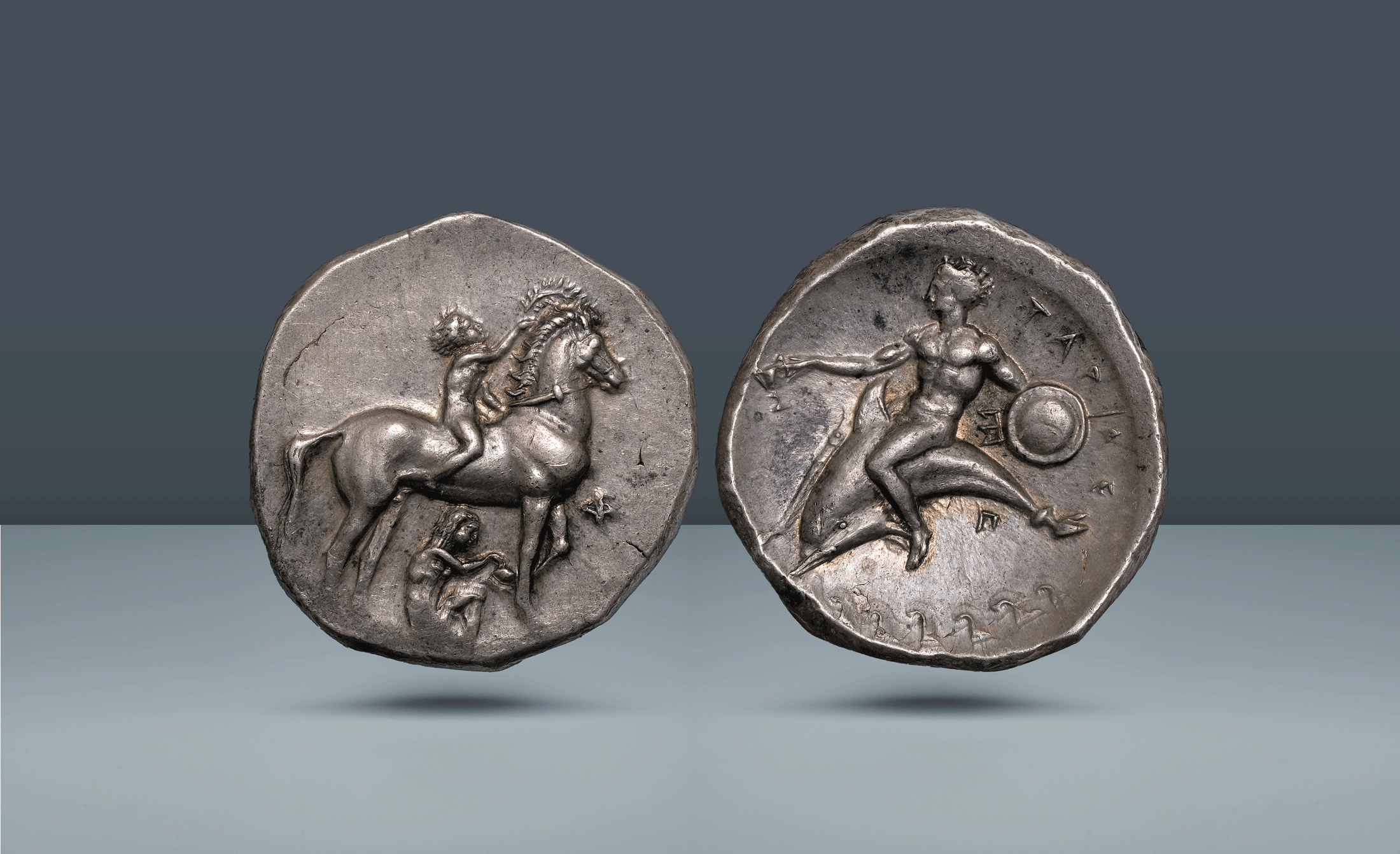Calabria, Tarentum. c. 340-335 BC
Calabria, Tarentum. c. 340-335 BC
AR Nomos, 8.05 g (22mm, 5h).
Nude ephebe on horse standing r., holding reins with his r. hand, crowning the animal with his l. hand; below, a second nude ephebe kneeling r., inspecting the horse's l. hoof; in field r., Φ / TAPAΣ Phalanthos, nude, astride dolphin l. over waves, holding with his l. hand small round shield and trident, cantharus in his outstretched r. hand; below tail of dolphin, Π
Pedigree: Ex Auction LHS Numismatik AG, Zurich 95 (2005), lot 437. From an old Swiss collection.
References: AMB 39, 86; Fischer-Bossert 227, 694 (same dies); Vlasto 62, 514 (same dies).
Grade: Lustrous with high relief and good strike. Obverse is unusually nice compared to most examples offered. EF
gk2031
Scroll down for more information about this coin.
The figure of Phalanthos occupies a central position in the numismatic tradition of Tarentum, representing one of the most enduring and archaeologically significant iconographic motifs in Calabrian coinage. The colony was mythically founded in 706 BC by Phalanthos, the leader of the Partheniae. Starting over a century later, Tarentum began issuing coinage that paid tribute to this figure and its deep connection to the dolphin in the City’s foundation myth. The spartan colonist Phalanthos was shipwrecked, but was saved by a dolphin that carried him to the shore, echoing the popular Greek myth of Taras. As the son of Poseidon, Taras was also saved from shipwreck by a dolphin, creating a dual mythological heritage where much of the fantastic lore surrounding Taras was retained, with only the mortal Spartan substituted by name. Coins with the "dolphin rider" design, like this example, represent an extremely important iconography for the coinage of Tarentum, serving as a unifying symbol that helped preserve the societal memory of Spartan colonialism.

